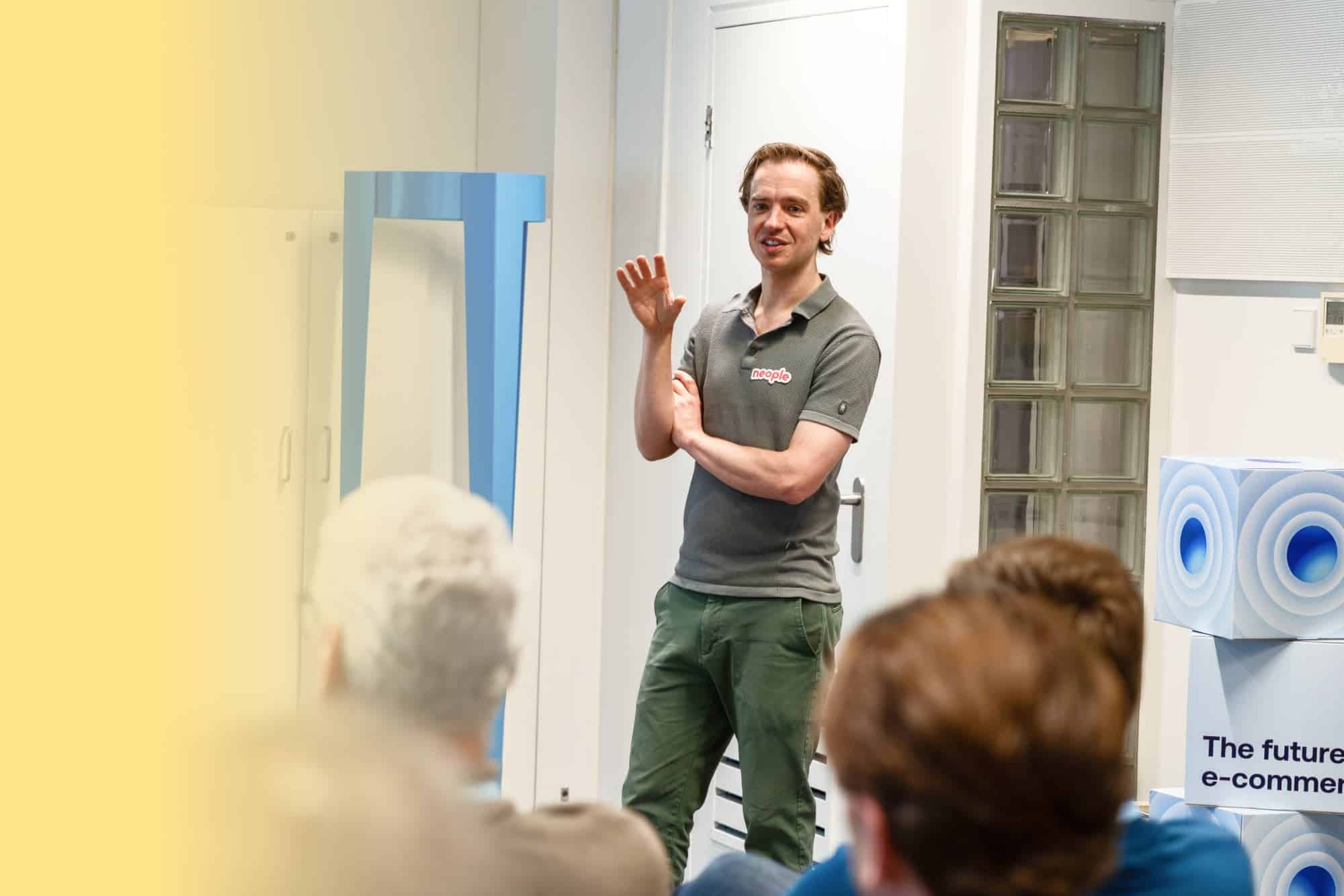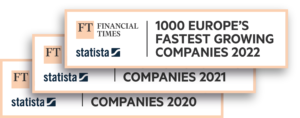Consumers expect a great experience, one that is fast, flexible, reliable, and increasingly more personal. This track explored how you can turn shipping into a competitive advantage and craft a post-purchase experience that keeps customers coming back. Explore the key insights and strategies shared by our speakers:
How to Handle 1 Million WISMO Questions with 1 Person
“Traditional businesses are broken. The old way of scaling doesn’t work anymore.” – Menno Zevenbergen, Neople
Customer support teams are under pressure. WISMO (Where Is My Order) tickets keep piling up, and hiring more agents isn’t a sustainable solution. So, what’s the smarter way to scale? At Sendcloud Connect, Neople’s Menno Zevenbergen (Co-Founder) and Seyna Diop (Head of Product) shared how AI-powered agents can handle high support volumes without adding headcount.
Key takeaways
✅ The old way doesn’t work anymore – Hiring more agents as ticket volume increases isn’t scalable.
✅ AI agents are the new co-workers – Instead of juggling multiple AI tools, one AI agent can learn, act, and scale like a real employee.
✅ Neople works across systems – It doesn’t just sit in Zendesk; it retrieves order info, updates addresses, and even automates workflows.
✅ Fast implementation, real ROI – Customer like Haarspullen successfully automated 44% of their customer inquiries in just 4.5 weeks.
“On average, a company with 100 employees uses 340 tools—Neople consolidates them into one AI co-worker.” – Seyna Diop, Neople
How AI transforms customer support
- Phase 1 – Learning: AI starts by suggesting answers to support tickets.
- Phase 2 – Automation: AI takes over simple responses, reducing manual work by up to 50%.
- Phase 3 – Execution: AI performs actions like updating orders, retrieving tracking details, and managing returns.
The road ahead
Automation and AI-agents aren’t just about support—they’re a blueprint for AI-driven growth. The same logic applies to returns, fulfillment, and logistics. Imagine reducing manual tasks across departments while maintaining top-tier customer experience.
Want to make WISMO tickets a thing of the past?
Explore how Sendcloud’s automation tools can help: Check out our latest guide on how to reduce WISMO.
And as you may have heard at our Connect event, we will soon be launching our own Support Automation feature! You can join the waiting list here.
De kracht van retour optimalisatie bij Only For Men (The power of return optimization)
Niels Bergmans (Returnless) and Bert Oosterom (Only for Men) shared how optimizing returns can reduce costs and increase customer loyalty. Especially in the fashion industry, where the average return rate is 55%, a poor return experience can drive customers away for good. But a smooth process can make all the difference.
Why return optimization matters
- 75%-100% of customers who experience an easy return process will buy again up to 3x more frequently. (Source: PostNL, Retourmagazine)
- 50% of consumers would switch to a competitor if they offer a better return experience. (Source: Emerce, How Logistics Affects Customer Satisfaction)
The key takeaway: No matter how seamless the front-end process is, the return experience makes or breaks customer satisfaction and loyalty. Many webshop owners focus only on the front-end, but the return process is a crucial part of the customer journey.
How Only for Men (OFM) transformed their return process
Before optimizing, OFM struggled with high return costs (€12-€15 per return), lack of insights into return reasons, and too much manual work. Their solution:
✅ Paperless returns – All returns are now digitally registered, eliminating paper forms and unnecessary printing. Customers can return items using a QR code, making the process more sustainable and efficient.
✅ In-store returns – Encouraging customers to return in-store reduces shipping costs and boosts repeat purchases. Today, 30% of customers return items in-store.
✅ Return data insights – By analyzing return reasons, OFM reduced returns in certain categories by 60%. Updating product descriptions and images helped prevent unnecessary returns.
What the numbers say:
- “We reduced our return rate from 31% to 27%, saving us hundreds of thousands in costs.” – Paul Wijnhoven, E-Commerce Manager at OFM
- “We’ve increased our profit by nearly €10,000 thanks to Returnless.” – Bert Oosterom, Project Manager at OFM
Additional tips from Returnless on how to use returns data in every department of your e-commerce business
E-commerce:
- Use return data to optimize product recommendations with tools like Tweakwise.
- Improve product information based on return reasons using tools like Faslet.
- Monitor returns and profitability on each marketplace with Returnless & Attalos.
Finance:
- Process refunds more efficiently or allow customers to pay afterward, automatically deducting return amounts with tools like Billink.
- Retain sales by offering store credit via Returnless.
Customer Experience & Service:
- Reduce customer inquiries about returns using tools like Neople.
- A smooth return experience improves overall customer satisfaction. Collect positive reviews on platforms like Trustpilot.
Takeaway
Returns don’t have to be just a cost center – with the right strategy, they can drive customer loyalty, profitability, and sustainability.
Want to optimize your return process? Check out our guide on return management strategies!
De weg naar 20 miljoen: maak als ondernemer de juiste keuzes en vermijdt de valkuilen
(The road to 20 million: Make the right choices as an entrepreneur and avoid the pitfalls)
In this engaging session, Thomas van Rooijen and Muhammed Aydogan from FRMWRK shared valuable insights on the 7 common pitfalls entrepreneurs face on their journey to growing their businesses to 20 million.
They emphasized 8 key building blocks for e-commerce success:
- Strategy
- Product
- Marketing & sales
- Customer
- Data & compliance
- Staff & organization
- Logistics
- Technology
The 7 pitfalls they discussed included:
- Assortment overgrowth: Keep product offerings focused to avoid profit leaks.
- Weak technical foundation: Ensure your platform is scalable for growth.
- Revenue vs. margin: Growth alone isn’t enough; profitability matters.
- Focus on existing customers: Retaining customers is more cost-effective than constantly acquiring new ones.
- Growing pains in operations: Build a scalable foundation and know what to outsource.
- Working IN vs. ON your business: Balance day-to-day tasks with long-term growth planning.
- Data, data, and more data: Extract valuable insights from data to make informed decisions.
The session also highlighted how crucial it is for businesses to focus on long-term strategy, optimize operations, and use data to drive decisions, helping entrepreneurs avoid common mistakes on the road to success.
Inside The Alpha Men’s Growth Journey – An exclusive interview by Picqer
At Sendcloud Connect, we got an exclusive look into The Alpha Men‘s growth journey. Founder Cedric van Dijken shared their challenges, strategies, and key lessons on scaling a D2C brand in an interview with Jefta van der Woerd (Picqer). From rebranding setbacks to shifting their focus on customer lifetime value, here’s what we learned.
Key takeaways:
✅ Rebranding & risk – The shift from reseller to own-brand led to a 30-40% revenue drop in 2023, but they rebuilt from the inside out. To recover, they refined their brand strategy and focused on long-term growth.
✅ Marketing & content – AI, TikTok & influencers played a key role in engaging customers and increasing brand awareness.
✅ Customer retention over acquisition – Instead of chasing new customers, they focused on building loyalty through personalized post-purchase experiences (handwritten notes, milestone gifts).
✅ International expansion – Their branding needed adjustments for different markets (e.g., German consumers found them “too Dutch”). Testing and iterating were key to success.
✅ Physical retail as proof of concept – Flagship stores will boost brand credibility and open doors to retail partnerships.
Growing a D2C brand requires strategic decisions, long-term vision, and the willingness to take calculated risks. Success is not just about acquiring customers but about building a sustainable brand with strong customer relationships and a market-adapted strategy.
















